Status: Native
Synonyms:
Opuntia spinosior (Engelmann) Toumey
Cylindropuntia spinosior suffers a bad rep. It certainly is dangerous if it is inadvertently
contacted, as the spines rapidly detach into the skin and are painful. However, the purple flowers
appear in profusion in the early summer and it can be a beautiful yard plant. Cylindropuntia spinosior
has been used in yards to protect outside windows from approach. The cylindrical segments are much
thicker than those of Cylindropuntia leptocaulis, although the two do hybridize. Cylindropuntia spinosior grows in lower and middle
elevations and approaches the upper elevations as well, although it does not commonly grow over about
8,500 feet. When a pollinating insect (or investigator's finger) brushes the many yellow stamens in the
flower's center, the stamens can easily be seen closing in slowly towards the pistil. The ripe spineless fruits of Cylindropuntia spinosior are bright yellow rather than the magenta of many other cacti here. This cactus probably reproduces more often by separating the stem segments than by the dissemination of seeds. The seeds are suborbicular (nearly lens shaped) and flattened with a conspicuous smooth girdle. Local artists use the woody skeletons of Cylindropuntia spinosior in natural sculptures. Plants living in the mountainous areas of southwest New Mexico must be as tolerant of cold and snow as they are to low water conditions. Some of the population here, to a varying extent, start to droop and turn purplish in response to winter.
Please click on an image for a larger file.
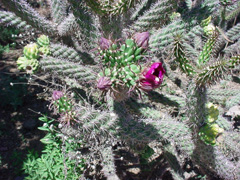
Cylindropuntia spinosior, photo Russ Kleinman, Pinos Altos Range, Pinos Altos
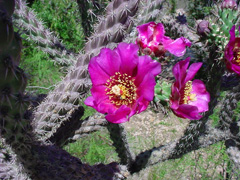
Cylindropuntia spinosior, open flowers, photo Russ Kleinman, Burro Mtns., Bill Evans Lake, May 23, 2007
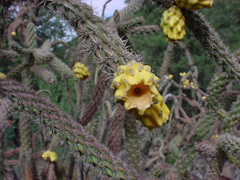
Cylindropuntia spinosior, with fruit, photo Russ Kleinman & Richard Felger, Mogollon Mtns., Holt Gulch, Nov. 10, 2007
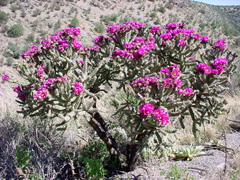
Cylindropuntia spinosior, growth habit, photo Russ Kleinman, Bill Norris, Leith Young & Richard Felger, Black Range, Ancheta Canyon, June 8, 2008
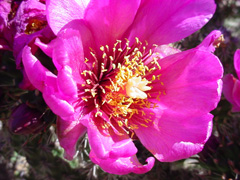
Cylindropuntia spinosior, detail of flower, photo Russ Kleinman, Bill Norris, Leith Young & Richard Felger, Black Range, Ancheta Canyon, June 8, 2008
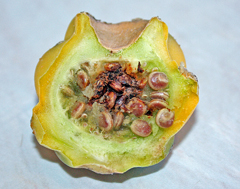
Cylindropuntia spinosior, fruit bisected, photo Russ Kleinman, Pinos Altos Range, Pinos Altos, Dec. 13, 2008
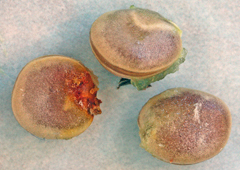
Cylindropuntia spinosior, macro of seeds, photo Russ Kleinman, Pinos Altos Range, Pinos Altos, Dec. 13, 2008
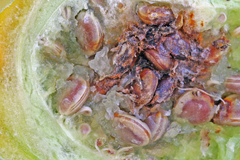
Cylindropuntia spinosior, macro of bissected fruit, photo Russ Kleinman, Pinos Altos Range, Pinos Altos, Dec. 13, 2008
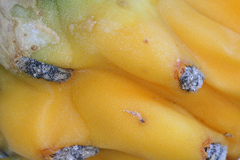
Cylindropuntia spinosior, macro of outer surface of fruit, photo Russ Kleinman, Pinos Altos Range, Pinos Altos, Dec. 13, 2008
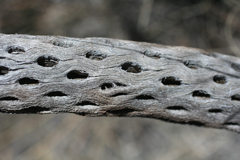
Cylindropuntia spinosior, skeleton used by artists, photo Russ Kleinman, Silver city Range, McComas Peak, Feb. 2, 2009
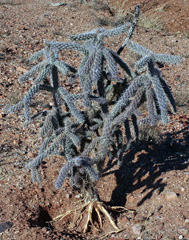
Cylindropuntia spinosior, exposed root system, photo Russ Kleinman, Silver City, Ridge Road, December 19, 2009
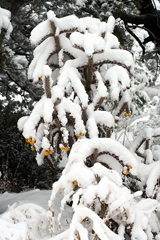
Cylindropuntia spinosior, must be winter adapted for this area as well as tolerant of low water conditions, photo Russ Kleinman, Pinos Altos Range, Pinos Altos, January 29, 2010
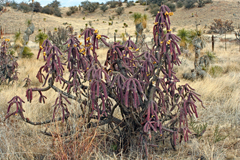
Cylindropuntia spinosior, droopy and purple in winter, photo Russ Kleinman, Silver City, February 2, 2010
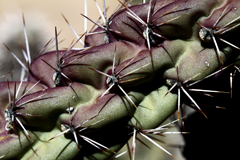
Cylindropuntia spinosior, closeup of joint, photo Russ Kleinman, Ridge Road near Silver City, February 12, 2010
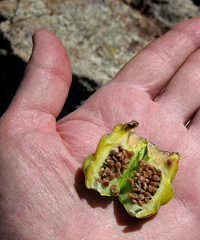
Cylindropuntia spinosior, fruit opened, photo Richard Felger, Mason Hawes & Phil Hawes, Gomez Peak, October 2010
Back to the Index